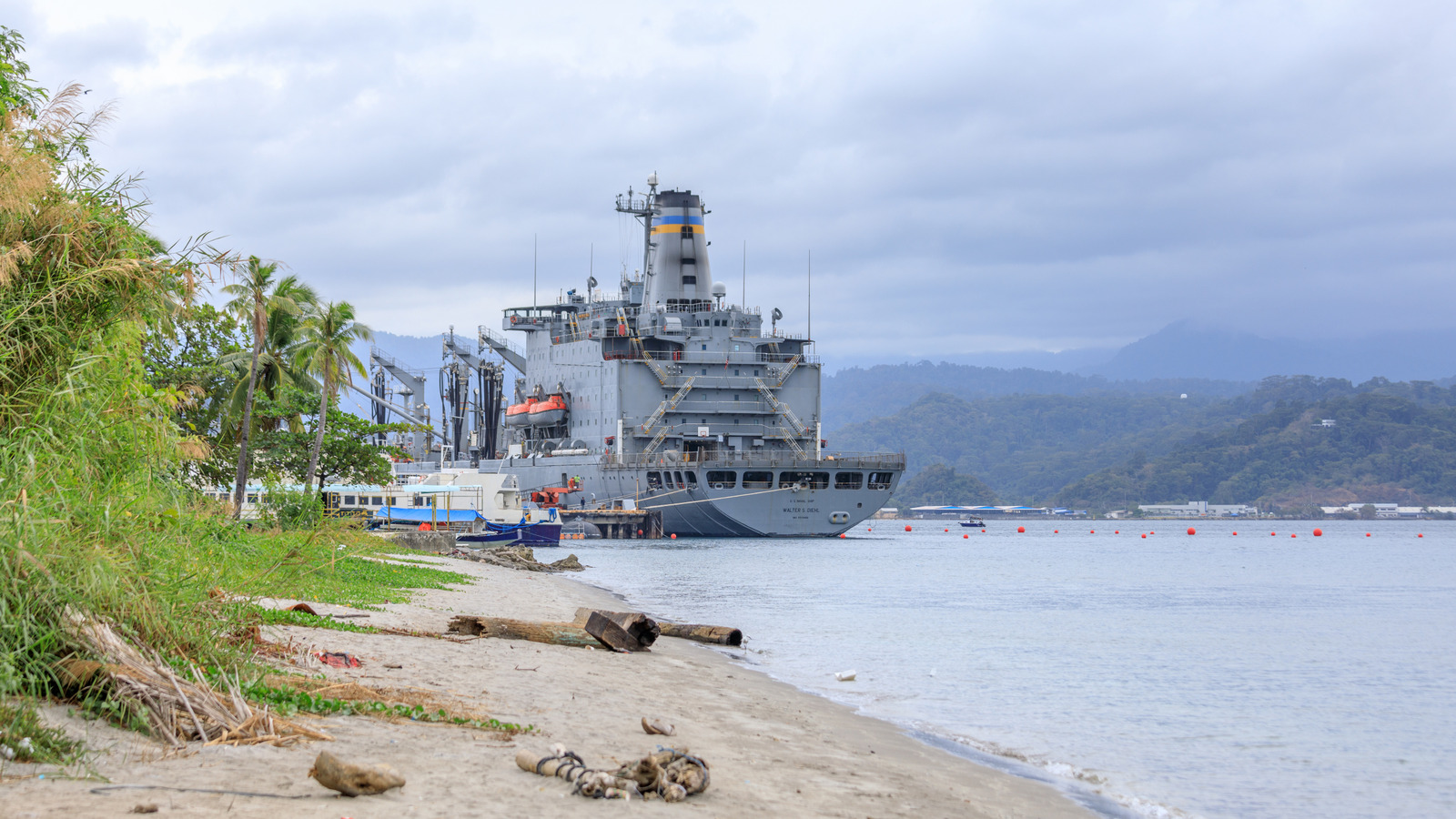Politics
U.S. Eyes Subic Bay for Major Weapons Production Hub

The United States is considering the establishment of a significant weapons manufacturing hub at Subic Bay in the Philippines. This proposed facility, potentially the largest of its kind globally, is located approximately 55 miles northwest of Manila and is strategically positioned near China. The plan emerged following a report from the U.S. House Appropriations Committee in June 2025, which urged the Pentagon, State Department, and International Development Finance Corporation to assess the feasibility of a joint ammunition production and storage site.
President Donald Trump has described the project as “very important,” positioning it as a means to enhance U.S. military readiness while bolstering the Philippines’ defense capabilities. For President Ferdinand Marcos Jr., this initiative aligns with the government’s Self-Reliant Defense Posture (SRDP), aimed at reducing reliance on foreign arms by promoting local production.
The proposed facility at Subic Bay would reportedly manufacture explosives, including nitrocellulose and nitroglycerin, while creating stockpiles for both U.S. and Philippine military use. The site’s geographic advantage is notable, as it lies just 1,100 kilometers from Shenzhen and Taipei and 2,800 kilometers from Beijing, placing it well within the range of Chinese missiles.
Since 2023, the Philippines has expanded U.S. military access under the Enhanced Defense Cooperation Agreement (EDCA) and has welcomed advanced missile systems, transitioning from a rotational presence to a more permanent U.S. military footprint. If constructed, this hub would represent the most significant U.S. defense investment in the Philippines since the Cold War.
The proposal has sparked considerable criticism within the Philippines. The International Coalition for Human Rights in the Philippines (ICHRP) has condemned the plan as an infringement on Philippine sovereignty, warning that it risks turning the country into a “staging ground for U.S. wars in Asia.” The coalition links this development to the broader U.S. Indo-Pacific Ammunition Manufacturing Strategy, framing it as part of a military-industrial complex.
Critics, including the fisherfolk group Pamalakaya, have raised alarms about the potential impact on local communities and the environment. They argue that an ammunition factory could jeopardize livelihoods by contaminating fisheries with toxic chemical waste, while also increasing the likelihood of the Philippines being targeted in a U.S.-China conflict. These concerns echo historical sentiments from 1991 when massive protests led to the closure of U.S. military bases in the country.
The Subic Bay Metropolitan Authority (SBMA) has approached the proposal cautiously. While officials welcome potential investment, they have emphasized that foreign ownership in such projects is limited under Philippine law. Additionally, they have highlighted unresolved community concerns and environmental compliance issues. The SBMA has clarified that discussions are still in the exploratory phase and that most existing U.S. facilities in Subic focus on logistics and humanitarian support, rather than weapons production.
The Marcos administration frames the project as a practical response to escalating tensions with China, particularly in the contested South China Sea, which Manila refers to as the West Philippine Sea. Defense Secretary Gilberto Teodoro Jr. has indicated a willingness to explore the benefits of the plan, including increased resilience, job creation, and technology transfer, although he noted that no formal proposal from the U.S. has been submitted yet.
Domestic opposition complicates the narrative surrounding the proposal. Critics argue that the heightened U.S. military presence, with nine EDCA sites and newly deployed missile systems like Typhoon and NMESIS, undermines Philippine sovereignty and escalates the risk of retaliation from Beijing. Vice President Sara Duterte has cautioned that a close alignment with Washington could turn the Philippines into a “bullet shield for China.”
Despite the growing controversy, momentum appears to favor the expansion of U.S. military capabilities in the region. The U.S. has already secured new warehouse space in Subic for prepositioning military equipment, while its Marine Corps and Navy continue to expand their presence in the area.
Supporters of the Subic Bay hub highlight that the Philippines has a Mutual Defense Treaty with the United States, which could facilitate co-production of ammunition, thereby reducing dependence on imports and deterring external threats. As discussions continue, the future of the proposed weapons hub remains uncertain. Its implications extend beyond military strategy, testing the extent to which Manila is willing to integrate with Washington’s Indo-Pacific framework while navigating complex regional dynamics, particularly concerning China and its growing naval capabilities.
-

 Health3 months ago
Health3 months agoNeurologist Warns Excessive Use of Supplements Can Harm Brain
-

 Health3 months ago
Health3 months agoFiona Phillips’ Husband Shares Heartfelt Update on Her Alzheimer’s Journey
-

 Science1 month ago
Science1 month agoBrian Cox Addresses Claims of Alien Probe in 3I/ATLAS Discovery
-

 Science1 month ago
Science1 month agoNASA Investigates Unusual Comet 3I/ATLAS; New Findings Emerge
-

 Science4 weeks ago
Science4 weeks agoScientists Examine 3I/ATLAS: Alien Artifact or Cosmic Oddity?
-

 Entertainment4 months ago
Entertainment4 months agoKerry Katona Discusses Future Baby Plans and Brian McFadden’s Wedding
-

 Science4 weeks ago
Science4 weeks agoNASA Investigates Speedy Object 3I/ATLAS, Sparking Speculation
-

 Entertainment4 months ago
Entertainment4 months agoEmmerdale Faces Tension as Dylan and April’s Lives Hang in the Balance
-

 World3 months ago
World3 months agoCole Palmer’s Cryptic Message to Kobbie Mainoo Following Loan Talks
-

 Science4 weeks ago
Science4 weeks agoNASA Scientists Explore Origins of 3I/ATLAS, a Fast-Moving Visitor
-

 Entertainment4 months ago
Entertainment4 months agoLove Island Star Toni Laite’s Mother Expresses Disappointment Over Coupling Decision
-

 Entertainment3 months ago
Entertainment3 months agoMajor Cast Changes at Coronation Street: Exits and Returns in 2025









